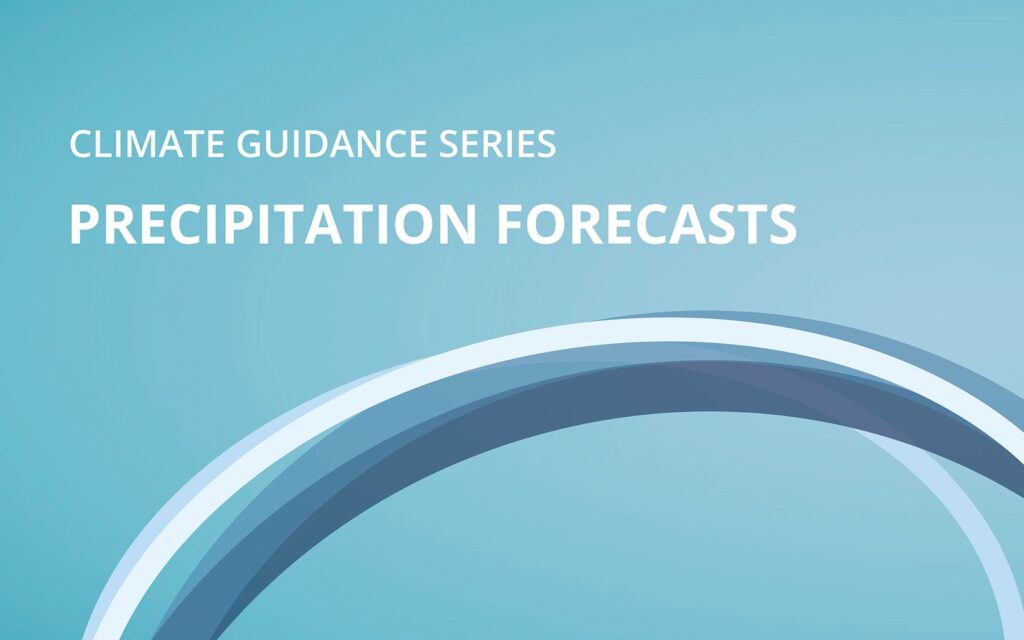Share
The climate crisis is intensifying humanitarian emergencies around the world and humanitarians are increasingly having to incorporate climate data and forecasts into their analysis and planning. We have developed a Climate Guidance Series to help humanitarians access, analyze and interpret different types of climate data. The first two guides in the series focus on observational rainfall data and precipitation forecasts.
Climate data refers to information about weather patterns, such as temperature or precipitation, and forecasts, which offer predictions about expected weather conditions over a period of time in the future. While this data is increasingly available through meteorological and scientific institutions, incorporating it into humanitarian analysis remains challenging.
Humanitarians need to understand where to access climate data, how to choose between different data sources and what limitations to consider. We hope this guidance helps decision makers navigate these complexities and make effective use of climate data for early warning and response.
A Guide to Observational Rainfall Data
Observational rainfall data captures how much rain has fallen over a defined period of time. This is produced by measuring the amount of rainfall at precise locations, which are called measuring stations or gauges. Rainfall can also be estimated using satellite or radar images that cover areas several square kilometers wide. Datasets that combine these observations are the recommended source for humanitarian purposes.
This data can be used to analyze historical rainfall patterns and compare current conditions to previous years. It can answer questions such as what areas are currently affected by drought or what was the duration of the longest dry spell during the past rainy season? Although there are many sources of data available, we focus on two: CHIRPS and ARC2. We also include the common limitations when using this data in analysis.
This guide was developed in collaboration with the Columbia University Climate School, International Research Institute for Climate and Society; the Royal Netherlands Meteorological Institute; and the Earth Observation Unit of the Research, Assessment and Monitoring Division of the World Food Programme.
A Guide to Precipitation Forecasts
Precipitation forecasts predict how much it will rain during a period of time in the future. They can be used to anticipate and mitigate the impacts of climate-related shocks such as drought and floods.
There are three common types of precipitation forecasts: seasonal, sub-seasonal and weather. We provide information on their lead times, spatial and temporal resolutions, and the types of questions each forecast can help to answer. We also include a list of common errors and misconceptions to avoid when using this type of data.
Precipitation forecasts can be presented in different ways, such as the total amount of precipitation expected, the likelihood of precipitation occurring, or whether precipitation is expected to be above, below, or near average. The accuracy of a precipitation forecast depends on various factors, such as the presence of El Niño or La Niña events, which can have a significant impact on precipitation patterns globally.
This guide was developed with input from the Columbia University Climate School, International Research Institute for Climate and Society, and the United Kingdom Meteorological Office (UK Met Office).
Next Up in the Series
We are working on two additional guides: the Normalized Difference Vegetation Index (NDVI), which is used to assess vegetation conditions throughout the rainy season; and flood forecasts, which are used to estimate flood risk and expected impact. These should be out in the coming months, along with French translations of the existing guides.
If you would like to learn more about these topics, you can watch the recordings of recent webinars introducing precipitation forecasts (French, English) and flood forecasts (French, English), which were delivered with the UK Met Office, the World Meteorological Organization and the Google Flood Forecasting Initiative.
For more on the use of climate data to anticipate and mitigate the impacts of climate-related shocks, visit the Anticipatory Action page on the Centre’s website or contact our team at centrehumdata@un.org.

